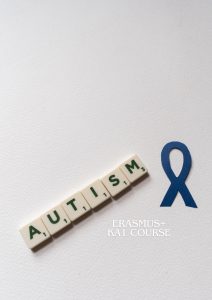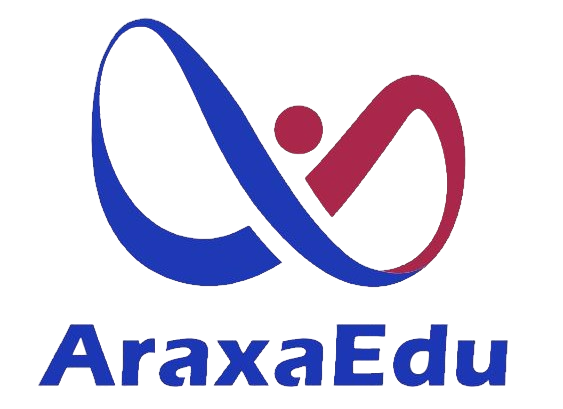
- Duration
- 5 days
- Language
- English
Course Description
The first diagnosis of autism spectrum disorders was made in 1943. Participants will get to know the changes experienced in the education of individuals with autism from the past to the present and the educational approaches, methods, and techniques applied in this change process.
Participants will be aware of innovative research on the answer to the question of whether autism is a disease or a difference, which has been debated for years.
Participants will have the opportunity to remove all barriers that prevent their happiness by learning about the current diagnosis of ASD, the characteristics of individuals with ASD, and the communication and interaction difficulties they experience at school and in daily life.
Participants will learn the right methods and techniques to prevent environmental bullying that individuals with autism are exposed to in different environments, which will support them in being happy individuals.
Participants will learn the right methods and techniques to prevent environmental bullying that individuals with autism are exposed to in different environments, which will support them in being happy individuals.
Participants will have information about problem behaviors in individuals with ASD and the reasons for these behaviors. Thus, they will have the opportunity to realize solution-oriented arrangements by being aware of sensory problems, incorrect environmental arrangements at home and school, and faulty education-teaching practices.
The sudden changes in the COVID-19 era have created great challenges, especially for children with autism, who need a longer adaptation period. They faced additional difficulties in understanding the new situation and creating new routines. Through this course, participants will learn how to provide appropriate support to individuals with autism.
Available Dates & Locations
- İstanbul, Türkiye
- Mon, Nov 10, 2025 - Fri, Nov 14, 2025
- 5 Days
- Fethiye, Türkiye
- Mon, Dec 29, 2025 - Fri, Jan 02, 2026
- 5 Days
- Eskişehir, Türkiye
- Mon, Aug 10, 2026 - Fri, Aug 14, 2026
- 5 Days
Methodologies Of The Course
The course methodology will ensure the active involvement of the participants in all phases, that is, prior, during, and after the delivery of the course. More specifically, upon confirmation that the course will take place, the participants will receive preparatory material (if needed), which will cover all important concepts to be presented during the delivery of the course. The participants will have the opportunity to exchange feedback with the organiser of the course, AraxaEdu, and the trainer, as well as to request any clarification related to the content of the course.
The methodology of the training is based on a combination of three important elements:
Ice-breaking and Warm-Up Sessions
Provision of knowledge required (theory)
Use of training tools, such as case studies, videos, pictures, animations & exercises (practice—hands-on experience about sensory problems, classroom arrangements, communication skills, etc…)
Feedback/reflection (review)
During the delivery of the course, the participants will receive hard copy material, which will cover the content to be presented in all five (5) days of the seminar. The material will be presented in the form of PowerPoint (PPT) presentations, videos, & animations. Moreover, the active involvement and hands-on experience of the participants will be secured through various training tools, such as case studies, worksheets, scenarios, & exercises. These training tools are necessary to ensure that the theoretical knowledge gained by the participants can be used in real-life scenarios; an important aspect & added value for any training course.
On the final day of the course, the participants will have the opportunity to reflect on the information received and the experience gained in the specific field of study.
Pedagogical Approach
Examining the methods and techniques used in the education of individuals with autism.
Causes of problem behaviors in individuals with autism.
Methods of preventing problem behaviors in individuals with autism.
Teaching Methods
- Expression
- Argument
- Group Teaching
- Active Learning
- Individual
- Presentation (Briefing)
Learning Outcomes
- Recognizing the characteristics of individuals with autism.
- Learning to identify strengths and weaknesses.
- Learning to communicate with children with autism.
- Developing strategies to prevent problem behaviors.
- Ways to make individuals with autism independent in social settings and the classroom
Objectives
- Obtaining information on literature reviews and historical development about autism
- Developing training sessions with the methods and techniques used in teaching children with autism
- Identifying problem behaviors and developing strategies to combat problem behaviors
- Developing environmental and classroom arrangements for Individuals with Autism who can act independently
Type of Certification Awarded
1. Certificate of Attendance
2. Europass Certificate (if requested)
Our courses are designed and delivered in compliance with the quality standards of the Erasmus+ Key Action 1 Quality Standards for Courses.
Schedule of the activities
Online Meeting Program
– Meeting with the trainer
– Presentation of info pack
– Q & A session
- Ice Breaker Activity
- What is autism?
- Introduction to the basic terminology of autism
- The most common myths related to autism
- Types of autism
- The development of autism
- Behavioral training of autistic children
- Problem behavior modification
- Use of reinforcers
- The role of the family in the education process
- Key areas affected by autism – social skills, language, and communication
- Ways of teaching social skills to individuals with autism
- Ways of teaching communication to individuals with autism
- Ways of teaching language skills to individuals with autism
- Strategies for raising independent autistic individuals
- Presentation of what has been learned by the trainees
- Drama, Role-playing activities
- Creating sample plans

